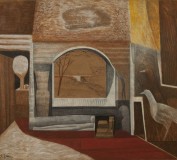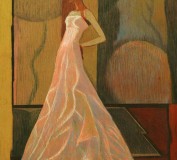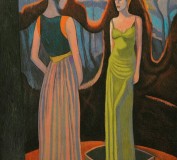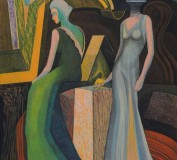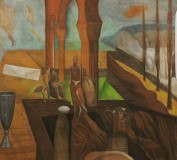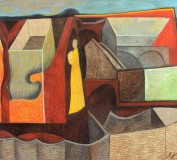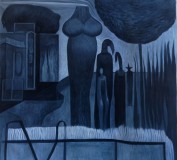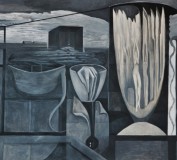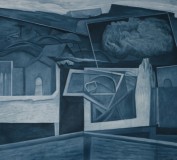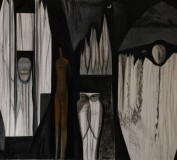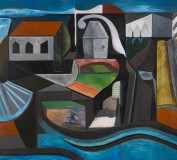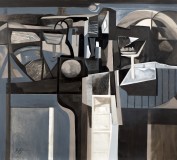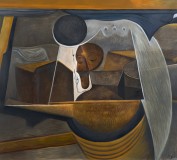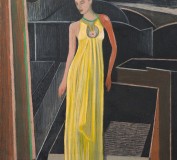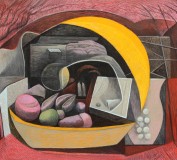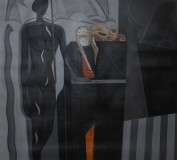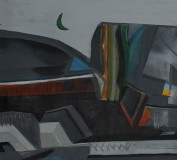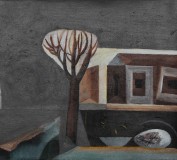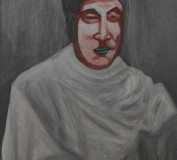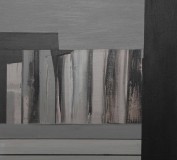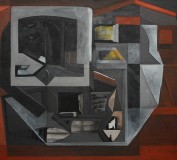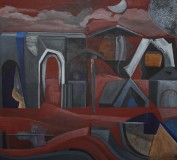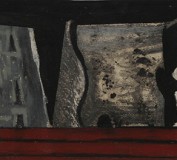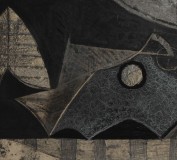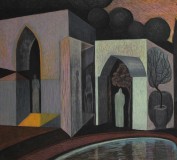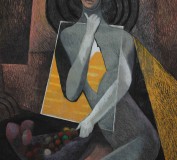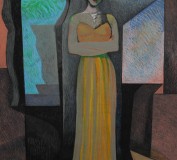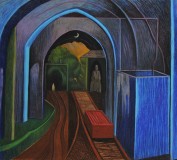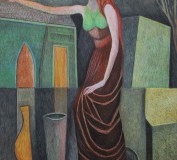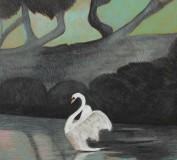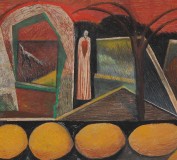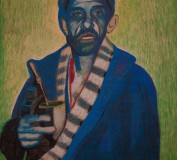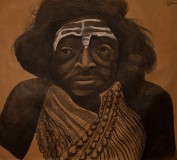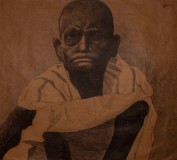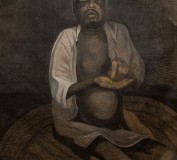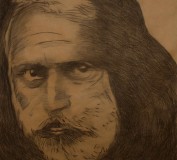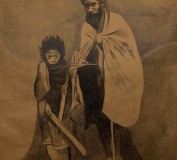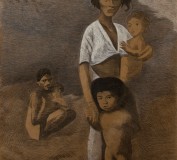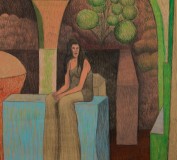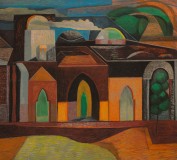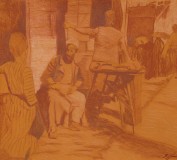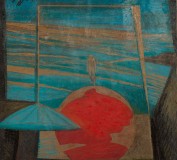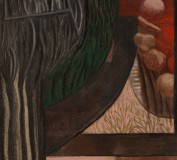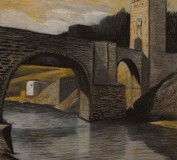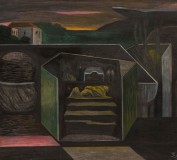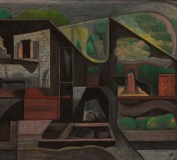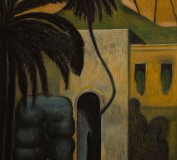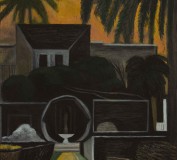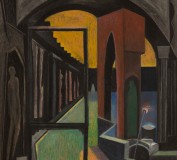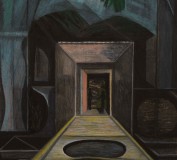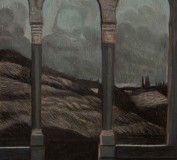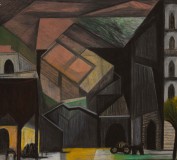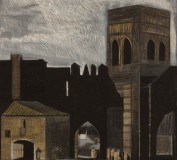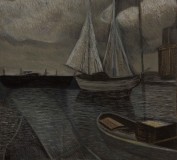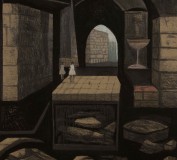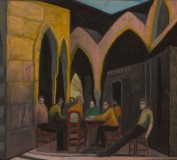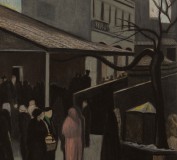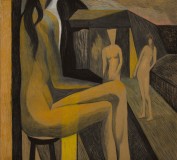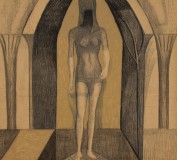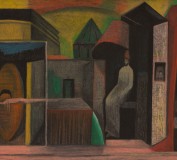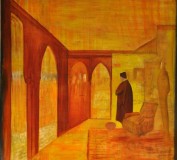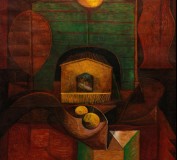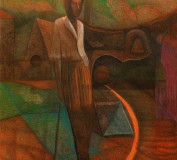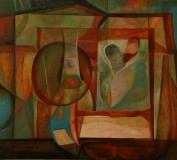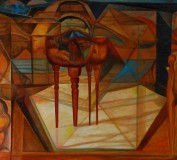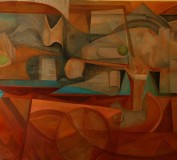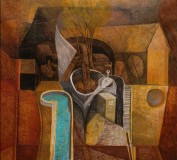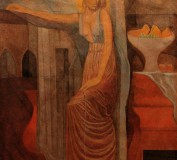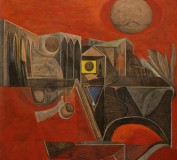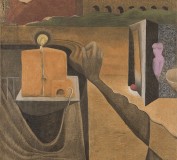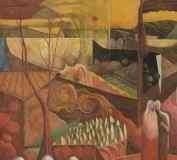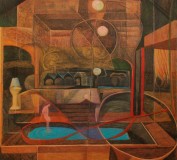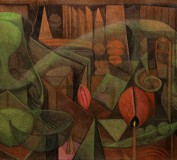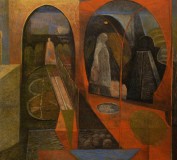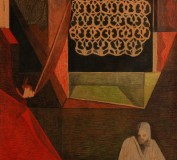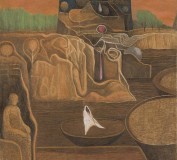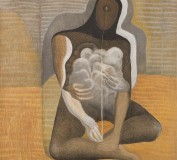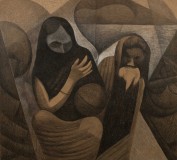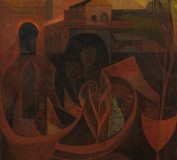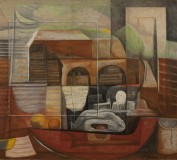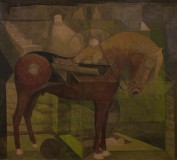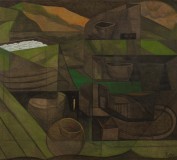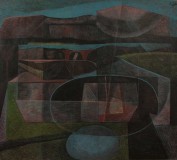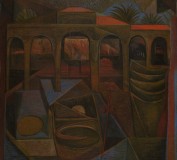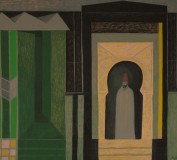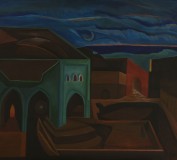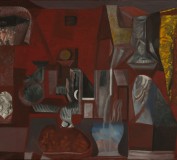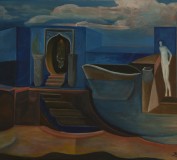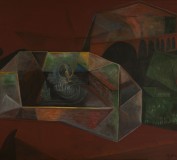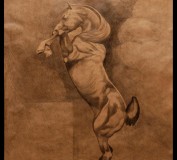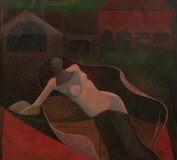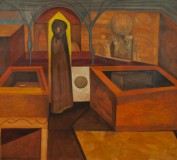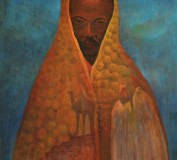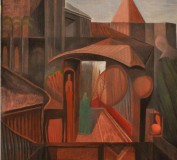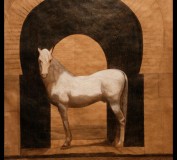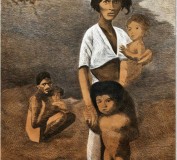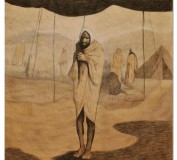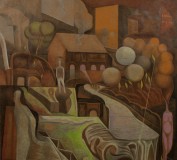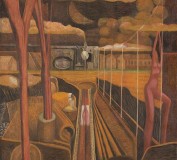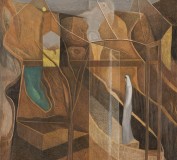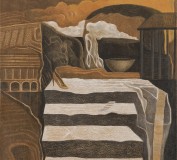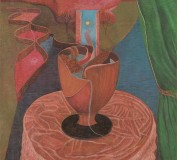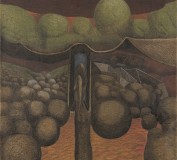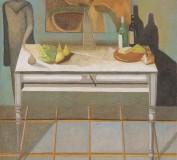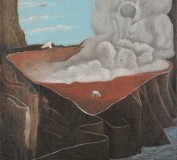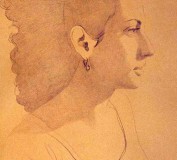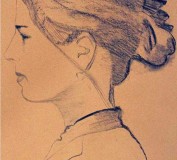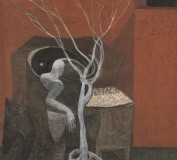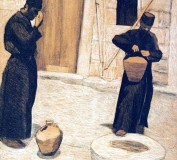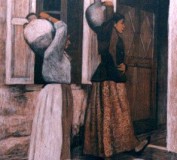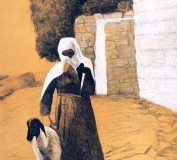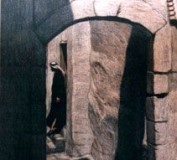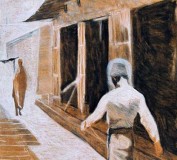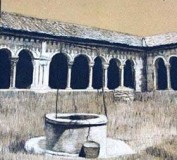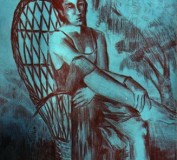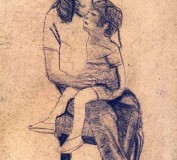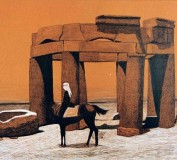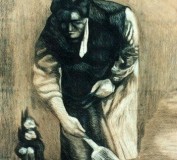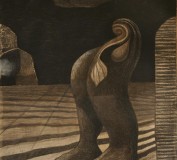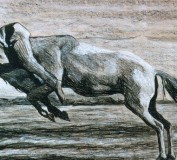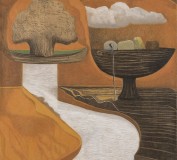The Daily Star
- Written by Bruno Sfeir
- Posted 11 years ago
- No comments yet
- Reviews, PRENSA
 |
|
|
Bruno Sfeir’s surrealism: beyond the fronteras of nation states Juººly 30, 2008 12:00 AM By Laura Wilkinson Bruno Sfeir’s surrealism: beyond the fronteras of nation states July 30, 2008 12:00 AM By Laura Wilkinson
JOUNIEH: “My contact with Lebanon,” Bruno Sfeir admits, “is a very new one.” The Uruguayan painter, whose works have been on display at Jounieh’s municipal palace for the last month or so, explains his Lebanese-Italian origins have sometimes pressured him to feel “Lebanese.” “In Uruguay,” he says, “I once met a Lebanese man, 100 percent Lebanese, who on discovering my origins, told me I was Lebanese. ‘But I am Uruguayan,’ I said, ‘born and raised here.’ “‘No!’ he retorted firmly, ‘You are a nacido,’ a Lebanese born in Uruguay.” Relating this anecdote with a smile, Sfeir points out that he doesn’t speak Arabic and, if he had to put himself into a box, would describe himself as a Latin American plastic artist. There are many symbols in Sfeir’s work – spindly keys, winding stairwells, distorted thresholds, and sweeping landscapes – that could easily be read as evocations of a search for a home or homeland, perhaps a sense of belonging. The poem that Sfeir devised to accompany the exhibition – his 17th since 1987 – suggests the symbols in his works, indeed the structure of the works themselves, relay something much more abstract than identity or belonging. “Are you looking for knowledge or for safety?” the poem reads. “… Leave your personal history and judgments aside.” Sfeir states that, in fact, he is not interested in nationality. “I’m not interested in these categories, ‘American,’ ‘Lebanese,’ ‘Uruguayan,'” he says. “I want to break these fronteras, these boundaries, and paint as a human being.” He suggests his works are more concerned with existential matters, a “journey” that may be influenced by external objects but one that is ultimately internal. Sfeir painted the works in his current exhibition in 2006 and 2007, mostly in Brasilia but some in Lebanon too. He says his work has had different stages and that this collection is very different from his past works – which came after a deep experience, after living in Kuwait. “Living in the desert is intense,” he says. “We have beautiful things [in Lebanon] – growth, nature, trees, birds, things that give good sensations. But living in Kuwait made me retreat into myself, go within myself, and so I found things within me.” There is a strong suggestion of both the immaterial and material in this work – as in “The Observers,” with its repeated motifs of moons, eggs, trees awaiting spring. There are also themes of movement – as in the boats, stairs and ambiguous portals of “Subtle Door.” Sfeir’s works are reminiscent of the school of art initiated by Uruguayan artist Joaquin Torres Garcia (1874-1949), whose symbolism employs such small objects – bowls, eggs and the like – as well as ladders, as organic wooden tones. It comes as little surprise that Sfeir studied Torres Garcia as part of his masters degree in fine arts. Along with the Cubist and Constructivist elements apparent in his works, there also seems to be an exploration of stasis and movement. Torres Garcia was concerned with re-examining Latin American art, with an emphasis on the pre-Colombian tradition, “an authentic culture” as Sfeir puts it. “Torres Garcia influenced me to look at other cultures, but it’s not so much about ‘pre-Colombian’ but about authenticity, and tradition. “His disciples, such as [Uruguayan artist] Gonzalo Fonseca [1922-1997] often studied in Arab countries, looking for ‘authentic’ culture, for purer traditions. In the Occident, things are mixed up.” The artist says that his main influence has been the Surrealist movement. The oil pastel-on-canvas paintings on offer at Jounieh’s municipal palace do have some fleeting references to the Middle East – a veiled woman for example. But the inclusion of this was, as Sfeir says, not a conscious decision but more a suggestion of mystery to tie in with the burden of searching within the unknown. Not all Sfeir’s works are abstract. Some simple and delicate sanguine-on-paper drawings touch upon the “authentic” and the uncomplicated. A group of tarboush-wearing boys huddle under a tree, brought together by curiosity about an object – held just beyond the spectator’s view. Their puzzlement, and the pecking order of who gets to have a look, are captured beautifully as they circle around the boy holding the coveted something. “You can be connected to an external object,” says Sfeir, “but you need to draw something out from within you. The connection is with your inner self.” He describes the process of painting as, for him, spontaneous. He makes no sketches and works directly on the canvas, which gives him the feeling of being “in two places at once.” Sfeir’s skill with oil pastel is perhaps what makes this exhibition so impressive. Composing such geometrically complex works with minute feathered strokes – with gradual warm blushes of color contrasting with his more somber, shadowed pieces – establish a rigid composition built up with soft tones. Among the more abstract suggestions of “burdens” and existential crises, Sfeir’s exhibition includes some spectacular landscapes, with interesting and obscure additions – cubic angles and invisible doorways. All invite new perspectives. Bruno Sfeir’s exhibition at the Jounieh Municipal Palace closes on July 31. Call +961 9 913 000 for more information. For those who missed this show, his work can be seen at http://www.brunosfeir.com Read more: http://www.dailystar.com.lb/Culture/Arts/Jul/30/Bruno-Sfeirs-surrealism-beyond-the-fronteras-of-nation-states.ashx#ixzz1QXddqwzJ |
About Bruno Sfeir
Bruno Sfeir estudió en la Escuela Nacional de Bellas Artes de Montevideo – Uruguay, posteriormente se forma con discípulos del maestro Joaquín Torres García y en el Club de grabado de Montevideo. Si bien su pintura toma elementos del constructivismo de Torres García, su proximidad al movimiento surrealista es aún mayor. En su obra, la intuición preside el movimiento revelando a cada paso una iconografía peculiar que elude rápidas conclusiones. Nos encontramos con un trabajo de carácter introspectivo que se manifiesta a través de un viaje interior. Una búsqueda incansable que despierta en el artista un interés por culturas milenarias de enseñanza y espiritualidad. En el año 2000 se traslada al Líbano, (país de origen de su abuelo paterno y gran impulsor de su creatividad) y más tarde al Golfo Pérsico, Egipto y Marruecos. Este es un punto de inflexión en la vida del pintor; pues su obra se impregna de ese perfume oriental, un aroma que perdura hasta en su más reciente producción. Actualmente Sfeir reside en España donde continúa con su prolífica producción. Bruno Sfeir studied at the Escuela Nacional de Bellas Artes in Montevideo - Uruguay, subsequently founded, along with students of the teacher Joaquín Torres García, the Montevideo Engraving Club. Although his painting takes up elements of constructivism from Torres Garcia’s, its proximity to the surrealist movement is even greater. In his work, intuition leads the motion, revealing in every step a peculiar iconography that avoids quick conclusions. It is a job of introspective nature that manifests itself through an inner journey. In 2000, after an untiring search that awakens an interest in ancient cultures of teaching and spirituality in the artist, he decides to move to Lebanon, (country of origin of his paternal grandfather and great promoter of his creativity) and later to the Persian Gulf, Egypt and Morocco. This is a turning point in the life of the painter; because his work is impregnated with that oriental perfume, an aroma that lingers even in his latest production. Sfeir currently lives in Spain where he continues with his prolific production.


